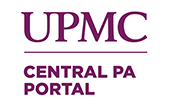The physicians at UPMC Heart and Vascular Institute are expert at both traditional and minimally invasive aortic repair and replacement.
Aortic aneurysm repair is a procedure used to treat an aneurysm (abnormal enlargement) of the aorta. Aneurysms can develop anywhere along the aorta which runs from your heart through the center of your chest and abdomen. Aortic aneurysms usually occur in the abdominal area and are called abdominal aortic aneurysms (AAA). When they occur in the upper part of the aorta, they are called thoracic aortic aneurysms.
Types Of Abdominal Aneurysm Repair
Repair of an abdominal aortic aneurysm may be performed surgically through an open incision or in a minimally-invasive procedure called endovascular aneurysm repair (EVAR). The options for treatment of your aneurysm will depend on a variety of factors, including location of the aneurysm, your age, kidney function and other conditions that may increase your risk of surgery or endovascular repair.
Abdominal aortic aneurysm open repair. Open repair involves an incision of the abdomen to directly visualize the aortic aneurysm. The procedure is performed in an operating room under general anesthesia. The surgeon will make an incision in the abdomen either lengthwise from below the breastbone to just below the navel or across the abdomen and down the center. The aneurysm will be repaired using a graft. The graft is sutured to the aorta connecting one end of the aorta at the site of the aneurysm to the other end of the aorta. Open repair remains the standard procedure for an abdominal aortic aneurysm repair and requires recovery for several days in the hospital.
Endovascular aneurysm repair (EVAR/TEVAR). These are minimally-invasive procedures performed in an operating room, radiology department, or a catheterization laboratory under general anesthesia, epidural or spinal anesthesia. Your doctor will make a small incision in each groin to visualize the femoral arteries in each leg. With the use of special endovascular instruments, along with X-ray images for guidance, a stent-graft will be inserted through the femoral artery and advanced up into the aorta to the site of the aneurysm. The stent helps to hold the graft in place. The stent-graft is inserted into the aorta in a collapsed position and once in place, the stent-graft will be expanded (in a spring-like fashion), attaching to the wall of the aorta to support it. The aneurysm will eventually shrink down onto the stent-graft.
Recovery time for people who have endovascular surgery is shorter than for people who have open-abdominal surgery. However, follow-up appointments are more frequent because endovascular grafts can leak. Follow-up ultrasounds are generally done every six months for the first year, and then once a year after that. Long-term survival rates are similar for both endovascular surgery and open surgery.
Reasons For The Procedures
It's important to discuss with your doctor the risks associated with both procedures however, he or she will like recommend surgery for one or more of the following reasons:
- To prevent the risk of rupture
- To relieve symptoms and restore a good blood flow
- Size of aneurysm greater than 5 centimeters in diameter (about two inches)
- Growth rate of aneurysm of more than 0.5 centimeter (about 0.2 inch) over one year
- When risk of rupture outweighs the risk of surgery
- Emergency life-threatening hemorrhage (uncontrolled bleeding)
Providers
Need more information?
Phone: 717-731-0101
Request Information
Read more about aneurysms.
Locations
Surgical Specialists of Lancaster - UPMC
1575 Highlands Drive
Suite 200
Lititz, PA 17543
Phone: 717-735-7410
Fax: 717-735-7438
Surgical Specialists of Lancaster - UPMC
2101 Embassy Drive
Lancaster, PA 17603
Phone: 717-735-7410
Fax: 717-735-7438
UPMC Heart and Vascular Institute
360 Alexander Spring Road
Carlisle, PA 17013
Adult Cardiology: 717-243-6557
Pediatric Cardiology: 717-761-0200
Fax: 717-243-0102
UPMC Heart and Vascular Institute
2020 Technology Parkway
Mechanicsburg, PA 17050
Adult Cardiology: 717-731-0101
Pediatric Cardiology: 717-761-0200
Fax: 717-731-8359
UPMC Heart and Vascular Institute
Located at Brady Building
205 South Front Street
4th floor
Harrisburg, PA 17104
Phone: 717-231-8555
Fax: 717-231-8568
UPMC Heart and Vascular Institute
2808 Old Post Road
Harrisburg, PA 17110
Adult Cardiology: 717-920-4400
Pediatric Cardiology: 717-761-0200
Fax: 717-920-4401
UPMC Heart and Vascular Institute
12 Saint Paul Drive
Suite 205
Chambersburg, PA 17201
Adult Cardiology: 717-217-6881
Pediatric Cardiology: 717-761-0200
Fax: 717-217-6889
UPMC Heart and Vascular Institute
Located at UPMC Outpatient Center
2201 Brunswick Drive
2200
Hanover, PA 17331
Phone: 717-637-1738
Fax: 717-646-7430
UPMC Heart and Vascular Institute
Located at Outpatient Services at UPMC Memorial
1703 Innovation Drive
Suite 4120
York, PA 17408
Heart and Vascular: 717-849-5576
Fax: 717-718-9972
UPMC Heart and Vascular Institute
Located at Medical Office Building
310 Stock Street
Suite 3
Hanover, PA 17331
Phone: 717-637-1738
Fax: 717-646-7430
UPMC Heart and Vascular Institute
1600 6th Avenue
Suite 105
York, PA 17403
Phone: 717-849-5576
Fax: 717-718-9972


















